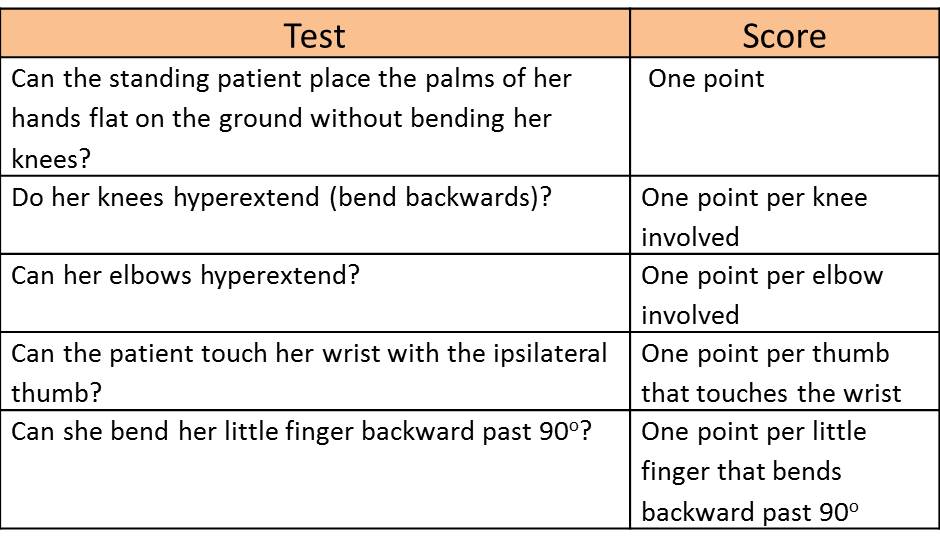Ehlers-Danlos Syndrome (EDS) is not one syndrome but a group more than 10 different congenital disorders characterized by a defect in the production of collagen. EDS can be present as a mild condition that presents with hyperelastic joints, or it can present as a life threatening form that can result in major blood vessel or organ rupture. Since EDS affects the production of collagen, it can cause increased elasticity and fragility of skin, ligaments, blood vessels, the intestines, muscles, and organs. As chiropractors, we should be particularly concerned with the combined characteristics of hyperelasticity of joints and increased fragility of blood vessels. The increased propensity for vessel damage and increased motion would increase the danger of causing vertebral artery dissection if a high-velocity low amplitude adjustment was performed on the cervical spine.
In addition to the increased risk for vascular injury, there is also the risk for dislocation of joints and other joint disorders. Bracing and stabilization exercises are common treatment for patients with EDS. There have been a couple case reports demonstrating the safe chiropractic management of patients with EDS through the use of chiropractic adjusting instruments, non-force techniques, postural advice, stabilization, and postural corrective exercises.
EDS is a relatively rare condition, but I tend to get two or three new cases per year (confirmed by subsequent referral and evaluation by our rheumatology department). It may be that the arthralgia of EDS sends these patients to chiropractors at a higher rate than would be seen by a family practitioner. For this reason we should be mindful of the diagnosis criteria and management of patients with EDS.
Clinical Presentation
There are a variety of types and levels of severity for EDS, but some of the characteristic findings include:
- Excessive joint motion
- Chronic arthralgia
- Overly elastic, fragile, or velvety skin
- Fragile blood vessels and organs
- Veins clearly visible under the skin
- Scoliosis
- Fragile eyes that are easily damaged
- Prolapse of the uterus or rectum
- Hernias
- Dental crowding and high palate
The Beighton Score
The Beighton score is based on a series of orthopedic tests that are used to quantify hypermobility and joint laxity found in EDS. A high Beighton score (6 or greater) is not pathognomonic for EHS, but it would warrant a referral to a rheumatologist. It is important for EDS to be properly diagnosed and managed medically (by a rheumatologist or geneticist) since there is a potential for life-threatening complications (organ or aorta ruptures top my list of potential concerns for severe cases).

Conclusions
Ehlers-Danlos Syndrome patients do present to chiropractic offices for treatment. Chiropractors should be able to identify patients with the likelihood of EDS and make appropriate referrals to medical specialties. Chiropractors may also participate in the integrated and collaborative care of EDS patients, though they should forgo vigorous osseous and soft tissue techniques, and instead use low force techniques avoiding manual treatments that include cervical rotation. Bracing, ergonomic instruction, and stabilization exercises may be particularly beneficial to patients with EDS. EDS is not cured, it is managed.
References:
Smits-Engelsman B, Klerks M, Kirby A. Beighton score: a valid measure for generalized hypermobility in children. J Pediatr. 2011 Jan;158(1):119-23, 123.e1-4. doi: 10.1016/j.jpeds.2010.07.021. Epub 2010 Sep 17.
Beighton PH Horan F. Orthopedic aspects of the Ehlers-Danlos syndrome. J Bone Joint Surg [Br]. 1969; 51: 444-453.
Grahame R., Bird H. A., Child A. et al. (2000). The revised (Brighton 1998) criteria for the diagnosis of benign joint hypermobility syndrome (BJHS). Journal of Rheumatology, 27, pp. 1777-1779.
Colloca CJ, Polkington BS. Chiropractic management of Ehlers-Danlos syndrome: A report of two cases. J Manip and Physiol Ther 2003 Sept;26(7):448-459.
Morley JJ, Perrault T. Chiropractic Management of Ehlers-Danlos Syndrome: A Case Report
J Amer Chiropr Assoc 2010 Mar;47(2):6-15.
